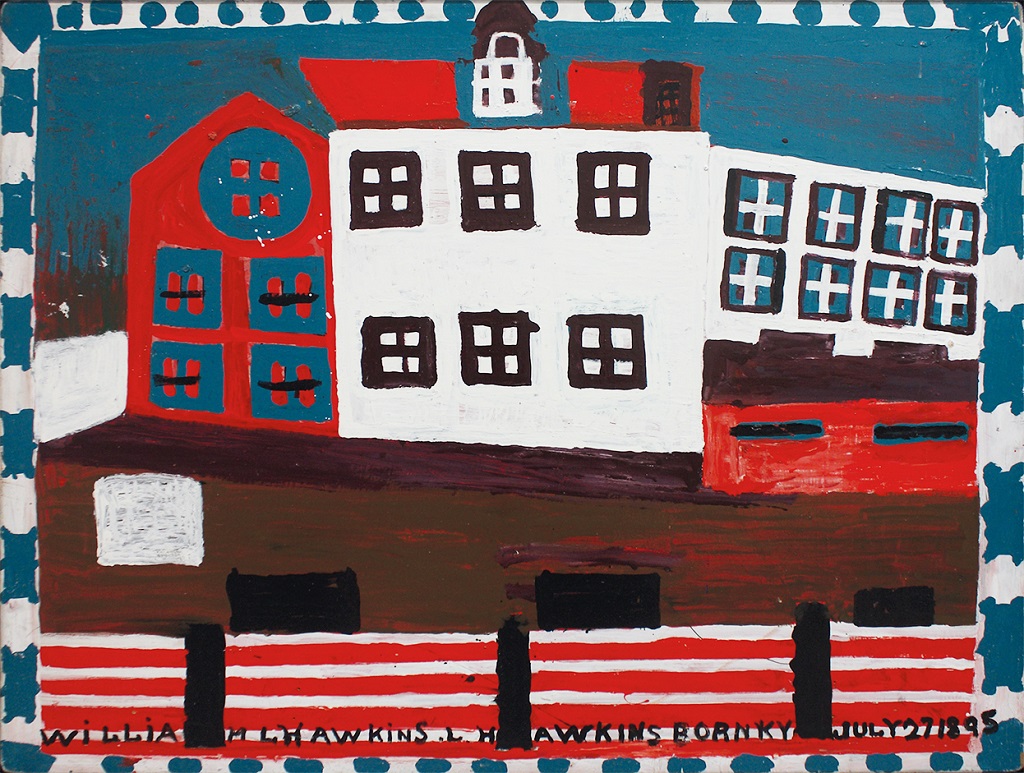Hawkins, William
United-States, 1895 – 1990
William Hawkins grew up on a farm in Kentucky, where he learned to paint images of horses from news clippings and old engravings that his grandfather owned. When he was 21, he ran away to Ohio after being forced into marriage. There he started painting views of public buildings, stadiums and streets, as well as a series of semi-mythological creatures. He is best known for his depictions of Ohio’s architecture, many of which he interpreted from photos featured in magazines. William’s style is dynamic and optimistic, and his senses of color and harmony are outstanding. Even in his old age, Hawkins painted works full of vitality and enthusiasm. He said he drew for “all the young people in the United States”. As if to prove that age did not really matter, William Hawkins used to sign his works with his birthdate: July 27, 1895.
Hawkins was a self-taught artist who worked hard and had held various jobs throughout his life: farming, horse-breaking, truck driving, house painting and flophouse management. His choice of materials was conditioned by his hard life, as he often used enamel paint and sheets of plywood that he could find near construction sites. In 1981, the musician Lee Garrett discovered his paintings by chance and showed them to the New York gallery-owner, Roger Ricco, who became a great admirer of Hawkins and represented him until Hawkins passed away in 1990.
William Hawkins is considered to be one of the greatest self-taught American artists of the 20th century. His works are part of permanent collections of American Folk Art Museum, Smithsonian American Art Museum, Intuit: The Center for Intuitive and Outsider Art, Ohio Columbus Museum of Art and Atlanta National Museum of American Art.
